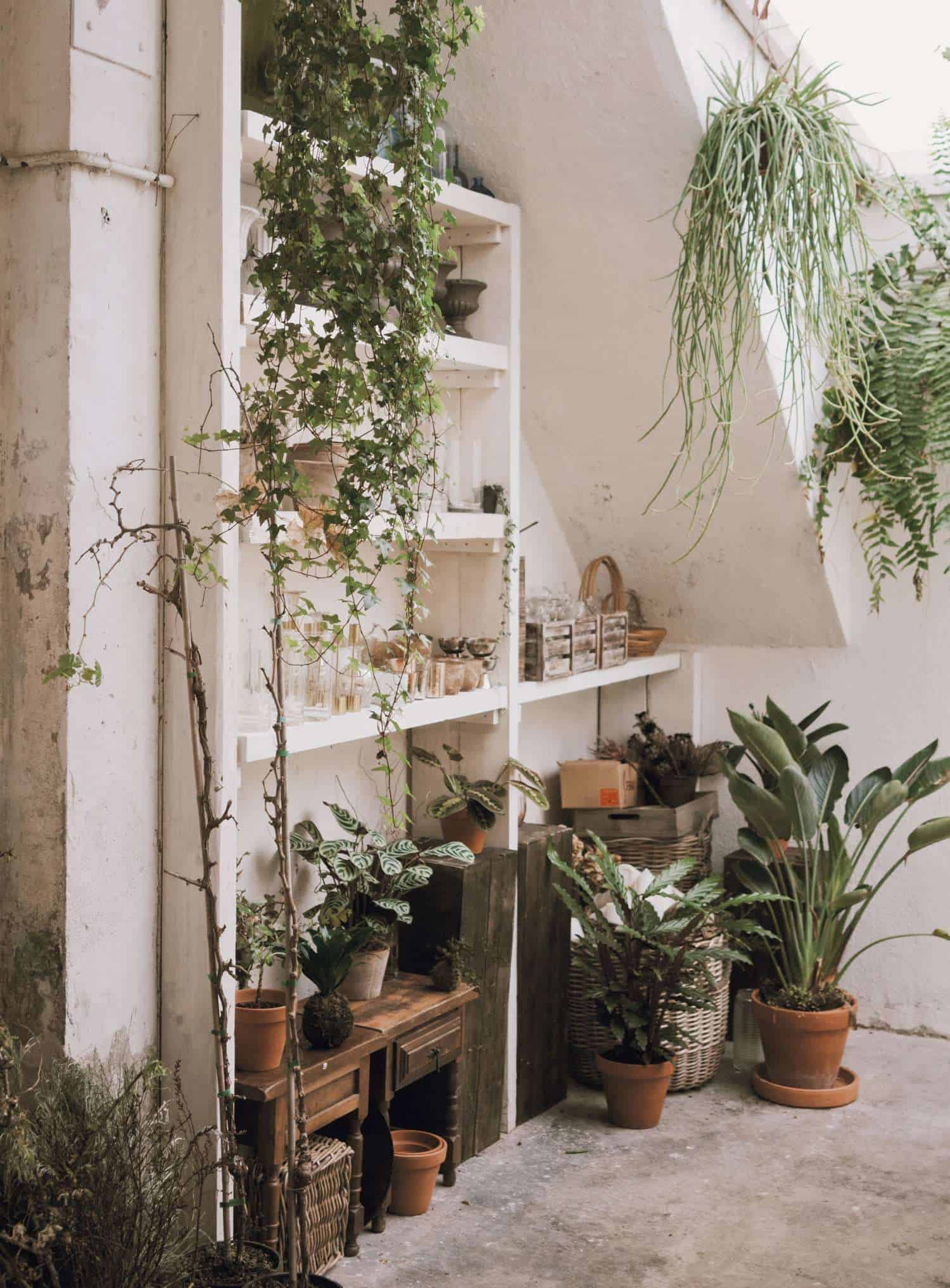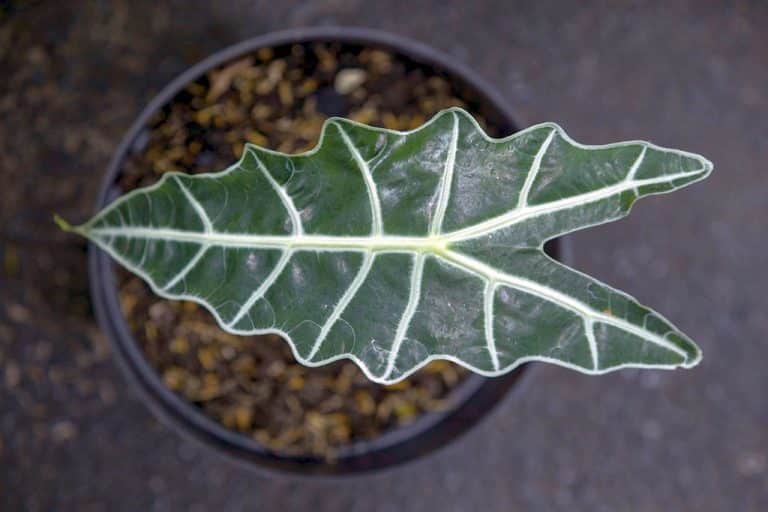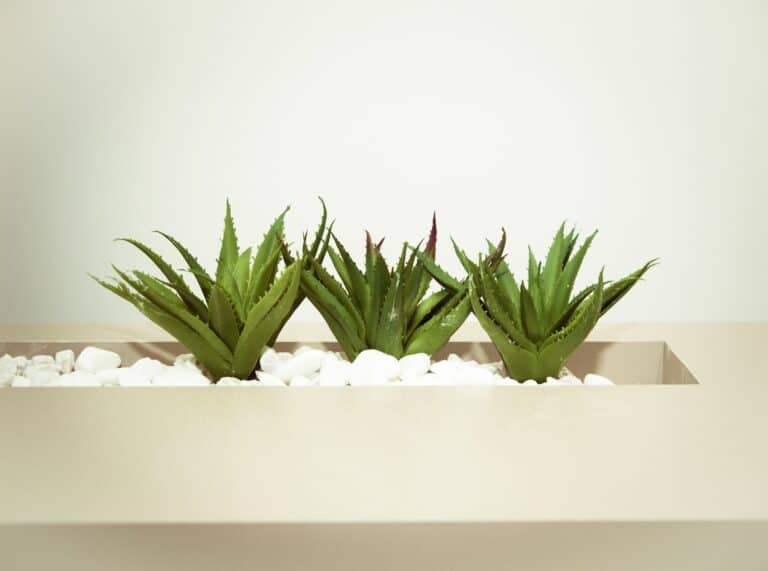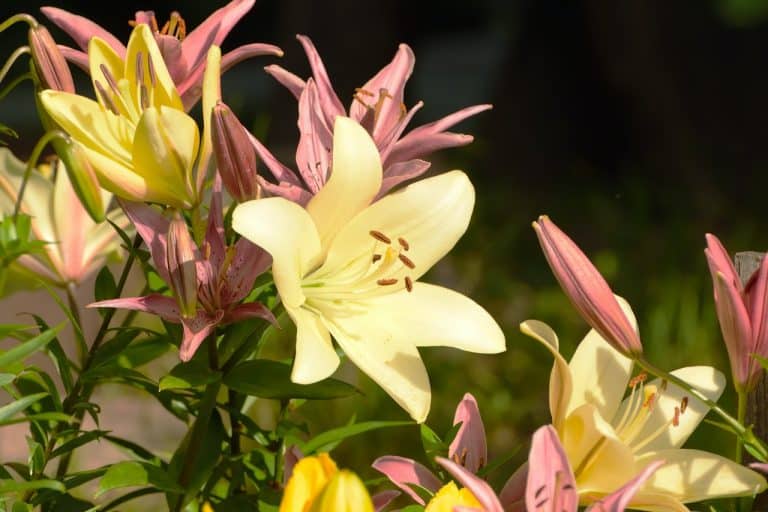Understanding Plant Light Requirements For Popular Houseplants
Owning houseplants is not just about watering and feeding. Understanding the light requirements of plants is essential for maintaining a thriving indoor garden.
Isn’t it fascinating how our indoor plants, each with their unique personalities, have such distinct sunlight requirements?
Some are like that friend who just loves basking in the sun’s glow, while others like that bookworm buddy who prefers a cozy corner with soft, ambient lighting.
Understanding and catering to these sunlight preferences is key to nurturing your houseplants and promoting their lush, vibrant growth.
If you really want to nail down this indoor gardening business, one crucial step is becoming familiar with different light exposure types – direct, indirect, and artificial light.
But that’s not all.
Ever noticed how the quality of sunlight changes in your space throughout the day?
It all comes down to the orientation of your windows. North, south, east, or west-facing – each has its unique pattern of sunlight.
Decoding this pattern can transform your indoor gardening game!
in this post, we will peek into their world, understand their preferences, and gather insights on creating that perfect, nurturing environment they’ll absolutely adore.
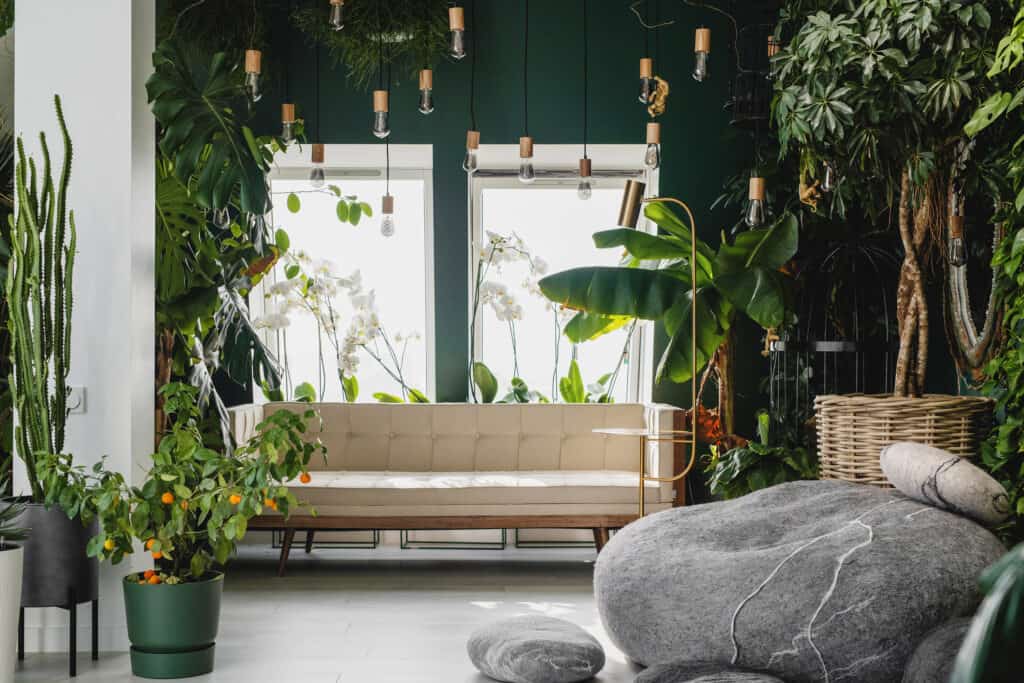
Essential Concepts in Plant Light Requirements
Photosynthesis and Light
Photosynthesis, in its simplest form, is how plants make a living.
It’s their job, if you will.
Through this miraculous process, plants transform carbon dioxide, water, and light energy into glucose and oxygen.
This sunlight-to-energy conversion is why light is so crucial for plants. Each plant species has its unique sunlight quota – some need more, others less – to carry out this critical function.
Three Light Types: Direct, Indirect, and Artificial
When we think about houseplants and light, we’re essentially talking about three categories: direct sunlight, indirect light, and artificial light.
Direct sunlight: Imagine standing outside on a sunny day with no shade overhead. That intense light you’d feel on your skin is what we call direct sunlight.
Some indoor plants, like cacti and succulents, absolutely bask in this form of light.
They need a good 6 hours or so of unfiltered sun each day to truly thrive.
Indirect light: Now, imagine that same sunny day, but this time you’re standing under a tree or near a window.
The sunlight you’d experience now is softer, filtered, or scattered – that’s indirect light.
This gentler form of light is perfect for many of our favorite houseplants, like the Monstera and spider plants.
These green companions prefer 5+ hours of indirect light daily, but they’re adaptable and can do well even in medium or low light conditions.
Artificial light: Then we have artificial lights, the human-made solution for places where natural light is scarce, or during those gloomy winter months.
Full-spectrum LED grow lights have become a popular choice for indoor gardeners because they provide the vital light wavelengths plants need for healthy growth.
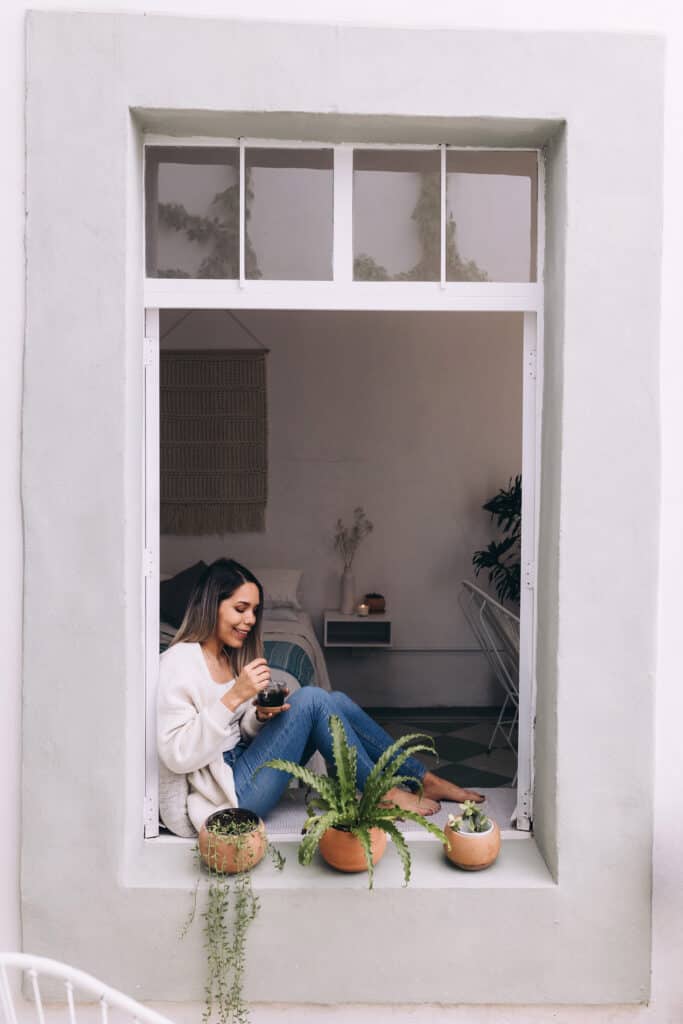
Understanding Light Intensity: Foot-candles and PPFD
In the world of houseplant care, simply understanding the type of light isn’t enough.
We also need to grasp the concept of light intensity.
For this, we use two common units: foot-candles and PPFD.
- Foot-candles: This unit describes the illumination on a surface one foot away from a light source emitting one candela. You can use a light meter to measure the foot candles in your space to ensure your plants receive the perfect amount of light.
- PPFD (Photosynthetic Photon Flux Density): PPFD measures the number of photons within the photosynthetically active radiation (PAR) range that hit a plant’s surface every second. This measurement gives you valuable insights into the light energy available for photosynthesis. A specialized PAR meter can help you measure PPFD.
The Unseen Role of Windows and Building Orientation
When figuring out plant light requirements, one aspect that often gets overlooked is the role of windows and your building’s orientation.
The direction your windows face can significantly impact your houseplants’ light diet. Here’s a simple guide to understanding this:
North-Facing Windows
In the northern hemisphere, north-facing windows receive the least direct sunlight, bathing the indoor space in consistent, soft light.
This diffused light is ideal for plants that love low to medium light conditions, like snake plants, pothos, and ferns.
However, it’s crucial to place these low-light plants as close to the window as possible to maximize their light exposure.
South-Facing Windows
South-facing windows are sun-lovers!
They offer the most direct, bright sunlight – perfect for high-light plants such as cacti, succulents, and citrus plants.
But beware, this intense sunlight can be too much for sensitive or variegated plants, often causing leaf burn.
Using light filtering curtains or moving the plants further from the window can prevent this.
East-Facing Windows
East-facing windows, with their gentle morning sunlight, provide a moderate and pleasant light condition perfect for a variety of houseplants, such as rubber plants, spider plants, and monster.
This direction offers less intense light compared to south-facing windows, creating a balanced environment for plants.
West-Facing Windows
The afternoon and evening sunlight exposure of west-facing windows can offer a bright and warm environment.
Plants like dracaena and hoya love these conditions.
However, the strong sunlight can damage sensitive plants, so it’s essential to use blinds or curtains to diffuse the sunlight when necessary.
By familiarizing yourself with the different light conditions each window orientation offers, you can effectively select and position your houseplants based on their specific light requirements.
This thoughtful placement ensures that your leafy companions stay healthy, vibrant, and continue to bring life and beauty to your space.
Popular Houseplants and Their Light Requirements
Understanding your houseplants’ lighting needs is paramount to ensuring they live their best lives.
Lets deep-dive into three categories of popular houseplants based on their light requirements:
The low-light-loving plants, those that prefer medium light, and the sun enthusiasts; high light plants.
Low Light Plants
Some houseplants have evolved to survive and even thrive in areas where the sunlight is filtered; these are our low-light plants.
They are perfect for rooms without direct sunlight or areas receiving light from a north-facing window.
Let me introduce you to some of these resilient green friends:
- Snake Plant: Talk about a plant with personality! This hardy plant can withstand low-light environments while purifying the air around it.
- ZZ Plant: The ZZ Plant is a tough, forgiving friend who doesn’t mind if you’re a bit forgetful with the watering can. Its preference for low-light settings makes it a favorite among indoor gardeners.
- Pothos: The Pothos is all about adaptability. This plant is happy in low light and just as content in bright, indirect light.
While these plants tolerate low light, they still need a dose of light to grow. Just don’t leave them in complete darkness.

Medium Light Plants
Medium light plants are those that love balance.
They need more sunlight than low-light plants but don’t do well with harsh direct sunlight.
Think of spots dappled with sunlight or spaces with east-facing windows, these are their preferred hangouts.
Here are some popular medium-light plants:
- Spider Plant: With a reputation for resilience and air-purifying capabilities, Spider Plants appreciate medium-light conditions and will thank you by staying away from direct sunlight.
- Monstera: Those Instagrammable split leaves need a lot of bright, indirect sunlight to develop and thrive.
- Peace Lily: This lovely plant can bloom indoors, provided it gets a sweet spot with medium light conditions and a little bit of humidity.
When caring for these plants, ensure they get just enough sunlight and not too much. Too close to windows with direct sunlight, and you may risk scorching their leaves.
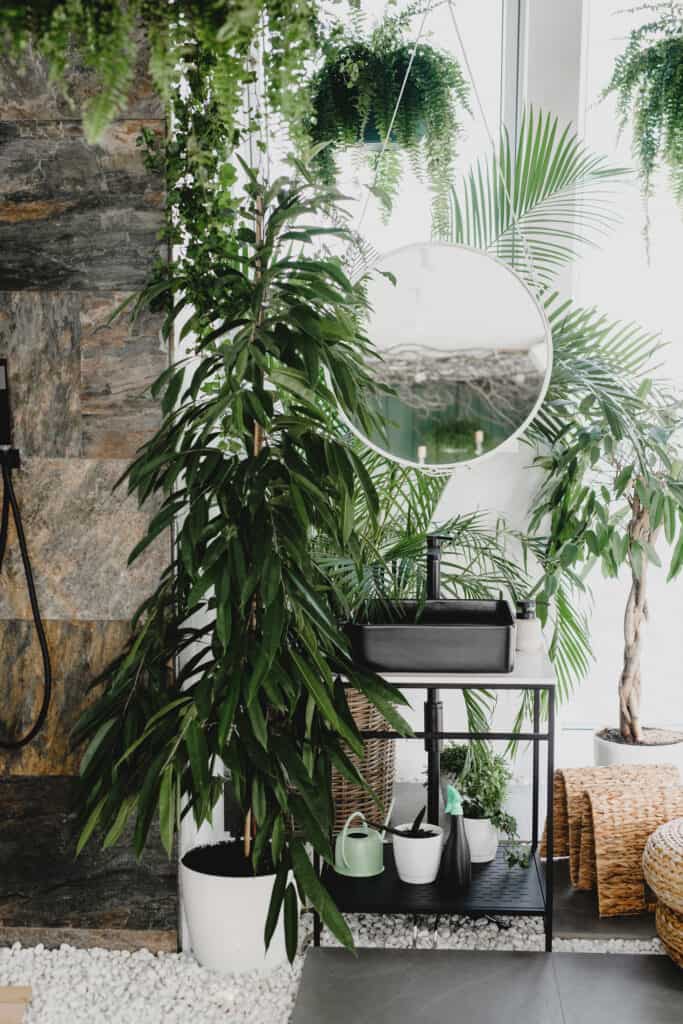
Sun Seekers: High Light Plants
Then we have the sun worshipers, plants that crave lots of bright, direct sunlight. They are best suited to south-facing windows or spaces where the sun generously illuminates the area.
Here are some popular sun loving plants
- Jade Plant: This charming succulent loves a good sunbath. At least 4 hours of direct sunlight a day keeps it healthy and maintains its vibrant color.
- Ficus: Imagine a houseplant that grows into a tree indoors! But it does need its sun – around 6 hours of direct sunlight daily to keep those beautiful leaves in shape.
- Succulents: Most succulents are direct sunlight enthusiasts, whether it’s Echeveria or Aloe Vera. They enjoy soaking up the heat of the sun.
When caring for high-light plants, provide plenty of sunshine, and observe their progress.
Rotate them regularly for even sun exposure and remember not to put them in spots where sunlight might be blocked or limited.
Conclusion
I get it. The world of houseplants and their light needs can be very confusing.
One moment, you’re wondering if your Snake Plant is getting enough rays, the next, you’re nervously watching your Ficus, hoping it’s not frying in the afternoon sun.
it’s okay if you’re still feeling a little overwhelmed, or if you’re second-guessing the placement of your Spider Plant.
That’s natural!
Even the best of us, the seasoned indoor gardeners, sometimes find ourselves squinting at our plants, wondering if we’re getting it right.
But It’s all about learning, adjusting, and growing much like our plants.
But with this guide, you have the inside scoop on how to assess light intensity, and you know your windows better than ever before.
Remember, every houseplant has its own needs.
i’d love to hear your stories and see your houseplant successes. Share your experiences and tips in the comments below.

